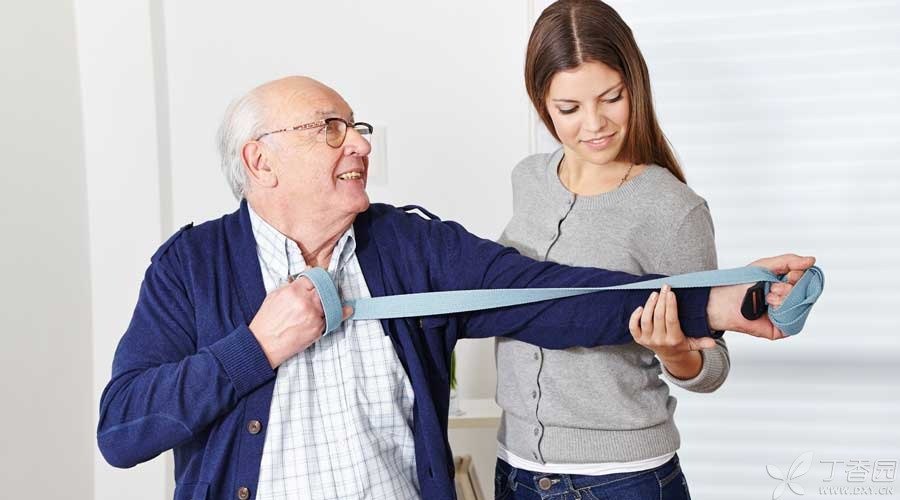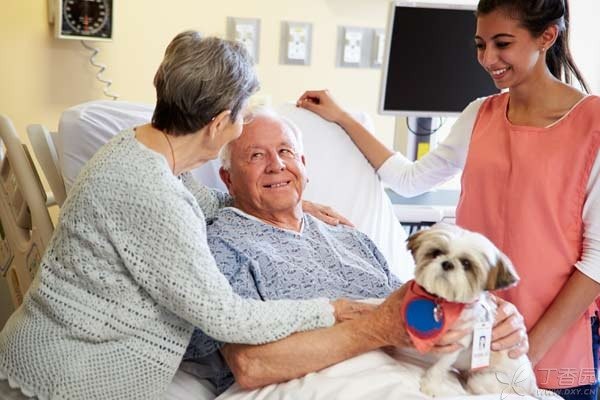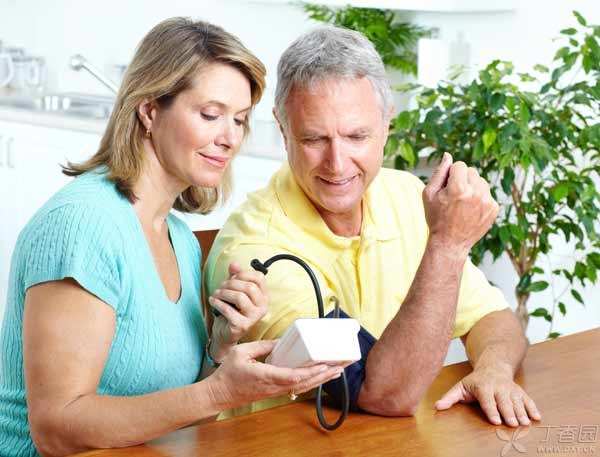
In the outpatient department, some patients with poor legs and feet or unable to speak clearly can often be admitted.
Family members will tell me that the patient has suffered several strokes in the past few years. When asked whether how helped the patient recover at home, most of the family members were vague.
Unfortunately, these families failed to form a good physical and mental health environment, and the patients did not have sufficient family rehabilitation support after their first stroke, thus missing the best recovery opportunity and leaving irreversible sequelae. What is more regrettable is that the subsequent strokes have rapidly exacerbated the deterioration of the patient’s health.
Stroke, also known as [stroke] or [acute cerebrovascular disease], is due to brain vascular rupture or blockage caused by cranial nerve function damage. This disease is mostly in the middle-aged and elderly people suddenly attack, death or leave sequelae probability is very high.
However, after recovery of stroke patients, about 60% of the patients can take care of themselves in daily life at the end of the first year, and only 5% need all help.
Therefore, after stroke patients are discharged from hospital, their families need to give them full understanding and support to help them recover their living functions to the greatest extent. At the same time, it is especially important to prevent the occurrence of another stroke.
Should Family Recovery Pay Attention to what?
1. Give more love and patience
Stroke sequelae can cause great psychological and physical trauma to patients, and are prone to anxiety, anger and even world weariness. Especially for those who were originally at the peak of their careers and were relatively young.
Family members should fully understand the mood of stroke patients who are eager to return to work and life, tell them the development of the disease, guide them to exercise reasonably, adjust their diet and living habits at the same time, and give them confidence and expectations of life.
This part of patients have few basic diseases, relatively young age and relatively high social level. In addition, if they can exercise scientifically and manage their health, they will recover relatively well and have a great possibility of returning to work or life.
Step 2: Create a healthy family environment
The onset of stroke is often accompanied by risk factors. Therefore, some long-term bad habits or factors need to be intervened in the rehabilitation process.
Creating a family environment conducive to physical and mental health, such as relaxing and pleasant family atmosphere, advocating low-salt and low-fat nutritious diet and sports habits, can strengthen patients’ rehabilitation awareness, help correct bad habits, and thus help functional rehabilitation.
3. Enhance the awareness of family protection
After stroke, there are many sequelae such as weak legs and feet, which are easy to fall down. Therefore, the accumulation of sundries should be reduced as much as possible at home, the ground should be kept dry and skid-proof, and guardrails can be installed on the bedside or toilet if conditions permit.
In addition, stroke patients should wear non-slip shoes instead of slippers. Family members should also teach patients how to get up in case of falling, which can reduce their fear of falling and injuries after falling.

Scientific rehabilitation training should be carried out as soon as possible.
Stroke patients are often accompanied by sequelae such as unclear speech and poor walking. Early exercise is very important for functional recovery.
1. Patients who cannot speak clearly
- Time: Generally speaking, 48 hours after cerebral infarction, about 1 ~ 2 weeks after cerebral hemorrhage, You can consider doing some targeted training in bed. Content: You can try to use picture learning cards to let patients practice pronunciation, from words to phrases, from phrases to simple sentences. Intensity: Attention should be paid to moderate intensity in the training process, 30-60 minutes each time, 1-2 times a day. Please keep learning interesting by combining physical stimulation and other methods without fatigue.
2. Patients with poor mobility
- Content: In order to promote functional recovery, he can be assisted or taught to use a good hand to drive the hand with unfavorable activities to do the following actions:
Raise one’s hand
Grasp something
Swing up and down, left and right
In addition to targeted training, other parts should pay attention to activities to prevent disuse atrophy or loss of function.
- Intensity: 30 ~ 40 minutes is advisable for each training, once in the morning and once in the afternoon.
3. Patients who already have the ability to walk, run, etc.
- Contents: Aerobic exercises such as running, fast walking and health exercises are suitable for activities. The degree of exercise is subject to the acceleration of heartbeat and breathing but not difficulty in speaking. Intensity: Maintaining a moderate amount of exercise for about 30 minutes a day can better stabilize blood pressure and improve blood circulation. For rehabilitation training, try to be carried out when the patient has good energy and sufficient sleep, and adjust the time and frequency according to the actual situation. If allowed, a single short time and multiple frequencies is better than a long time and short frequency.
4. Patients with severe sequelae
For some patients with especially serious sequelae and very difficult recovery, please try to seek professional rehabilitation specialists to train in professional rehabilitation centers to reduce injuries or bad postures caused by unscientific exercises in the recovery process.
A balanced diet
The basic principle of eating at home for stroke patients is to ensure balanced nutrition. At the same time, it is best to choose ingredients and cooking methods that can promote appetite and are easy to digest and absorb.
1. Balanced nutrition
This is the primary principle of diet for stroke patients during their rehabilitation period, and is also the key to prevent stroke recurrence. According to the patient’s exercise and weight, eat a proper amount of staple food every day, eat more vegetables and fruits to supplement vitamins and dietary fiber. Attention should be paid to supplementing a proper amount of high-quality protein such as beef, fish, eggs and milk to promote functional recovery.
2. Control the amount of oil used
Replace animal oil with vegetable oil and try to eat less or avoid fried food.
Step 3 Eat less sugar
In particular, it should be emphasized that the harm of adding sugar is everywhere. For example, sweet drinks and honey foods all contain a large amount of sugar. The effect of sugar on hypertension is no less than that of salt. Stroke patients should be prevented from eating too much of these foods as much as possible.
Step 4 Eat less sodium
High salt is also an important reason for blood pressure rise. Daily cooking tries to reduce the use of sodium salt so that patients can gradually adapt to light taste. It can also be replaced by low sodium salt, but it is not suitable for patients with renal insufficiency.
5. Cooking style is important
The food is delicious and easy to absorb, which is an important way to ensure nutrition. We can choose a variety of foods that stroke patients like, pay attention to the collocation of color, aroma and taste, and tend to choose steaming, boiling or quick frying in cooking methods, avoiding frying, sweet and sour as much as possible, so as to ensure the full absorption and utilization of nutrition.

If there is any change in illness, see a doctor in time.
After the first stroke, some patients will recur, causing more obvious physical and mental damage. It is very important to take measures to prevent the recurrence of stroke.
1. Regularly monitor blood pressure/blood glucose
In addition to helping patients to balance nutrition, exercise properly and adjust their emotions, we should also manage risk factors. For patients with hypertension or diabetes, blood pressure or blood sugar should be monitored daily during weather changes, diet changes or drug adjustments, and records should be kept, and regular monitoring should be carried out during stable periods.
2. Communicate regularly with doctors and avoid stopping drugs blindly.
Regularly go to the hospital to communicate with the doctor, feedback the records to the doctor, especially pay attention to adjust antihypertensive drugs according to the doctor’s advice when seasons change, and control the risk factors within the normal or even ideal range. Avoid blindly stopping drugs or adjusting the dosage by oneself to avoid accidents.
3. If there is any abnormal situation, see a doctor in time.
In working life, if there are such conditions as dizziness, tinnitus, headache, vomiting, numbness of limbs, weakness of limbs, blurred vision, vague speech, choking cough in drinking water, dysphagia, unstable walking, fainting, etc., or if the original dysfunction suddenly aggravates, it indicates the recurrence of stroke and should be treated in a timely manner in a hospital.
In short, both patients and their families need to establish a correct health awareness, form a family atmosphere that advocates healthy diet, scientific exercise and emotional management, and let every family member become a promoter and beneficiary of healthy habits. Only in this way can patients recover better and healthy people remain healthy.
Editor: Fu Ting
Author: Hu Jianping
